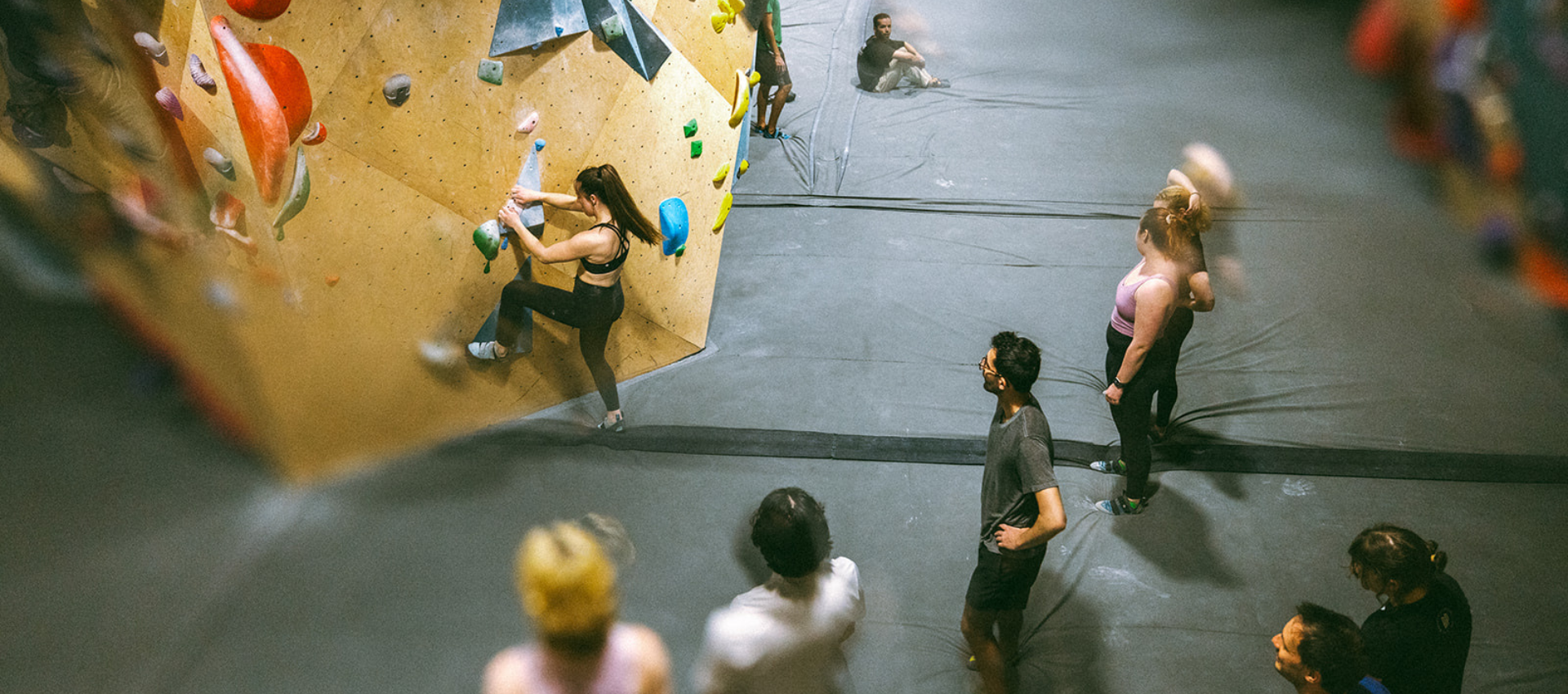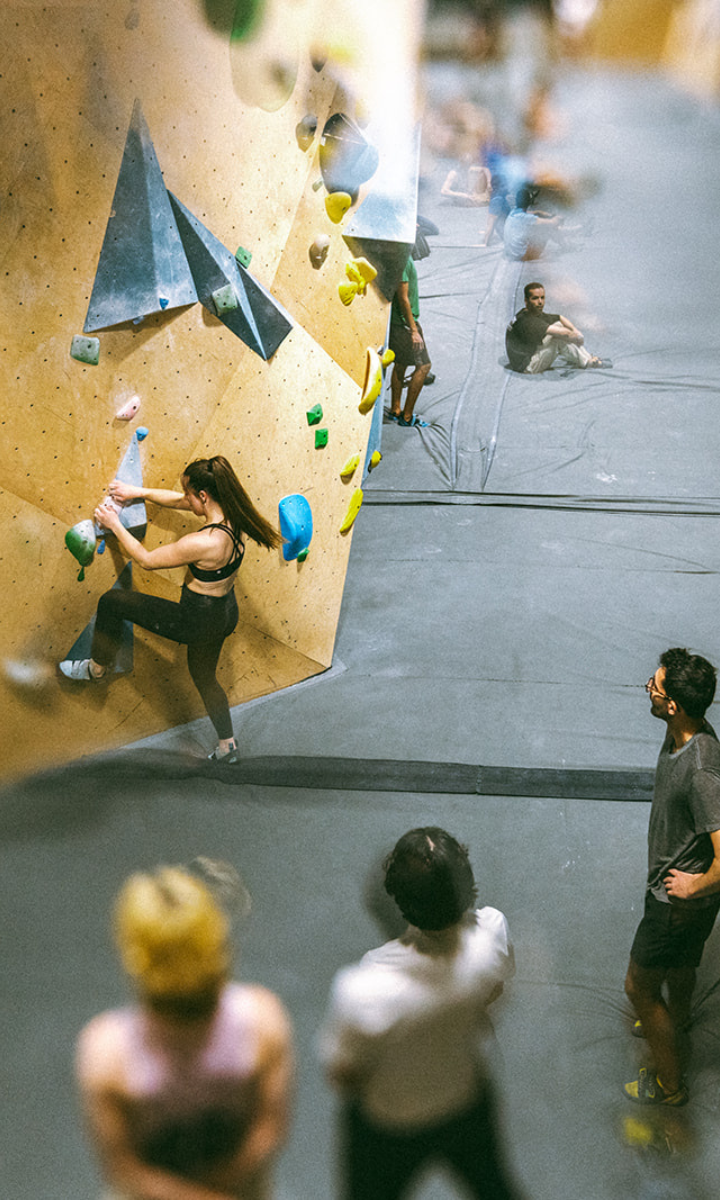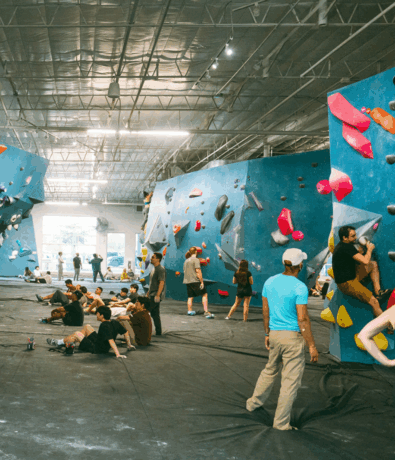

How to Understand Bouldering Levels and Climbing Grades at Any Gym
Whether you’re stepping into your first session or you’ve been rock climbing for years, understanding how bouldering grades, rock climbing grades, and climbing circuits work can open up a whole new level of confidence in your climbing journey. Grades give you insight into what you’re about to experience on the wall—helping you assess climbing difficulty, set goals, and stay injury-free.
In this guide, we’ll explore the most common systems you’ll encounter, both indoors and out, and how to use them to support your growth as a climber.
Why Climbing Grades Matter (and Why They’re Only Part of the Story)
Whether you’re reading a V-scale, a technical grade, or color-coded labels at your favorite climbing gym, climbing ratings offer a shared language for describing the overall difficulty of a route. They consider things like strength, technique, and mental focus—but they don’t tell the whole story.
Grades help you:
- Choose the right climbing route for your current ability
- Measure progress across styles (like sport climbing or bouldering)
- Avoid pushing too hard too soon, especially on new styles like technical climbing or trad climbing
- Get familiar with expectations across different gyms and outdoor areas
Common Climbing Grade Systems
V-Scale (U.S. Bouldering Grades)
Used primarily for bouldering, the V-scale runs from VB (intro) to V17 (elite). These numbers offer a rough estimate of how complex a boulder problem is, with some gyms also offering beginner-friendly labels like V0–V3 to help new climbers ease in.
Grade → What It Means
VB-V0 → Introductory – highly accessible
V1-V3 → Learning and building
V4-V6 → Intermediate – experiencing more powerful movements
V7-V8 → Advanced movements
V9-V10 → Expert level
V11+ → Elite level
Each gym’s climbing wall might set differently, so the same grade may feel easier or harder depending on how the problem is built.
Fontainebleau (Font) Circuit System
Fontainebleau, France is considered the birthplace of bouldering. In the 1940s, climbers started painting colored dots and arrows on the sandstone boulders to create routes through the forest. That has since evolved into a standardized, color-coded circuit system.
In a circuit system, circuits are groups of climbs defined by hold colors. These hold colors represent the approximate difficulty of the climbs and a diverse set of challenges meant to test all of a climber’s skills. At Bouldering Project, Yellow climbs are the friendliest, and White (or Mint, in some gyms) climbs are the most challenging.
One of the goals of a circuit system is to de-emphasize grades and emphasize a sense of discovery, which is why the difficulty level of colors overlap with one another. For example, Purple climbs at BP gyms overlap with Red, Green, Orange, and Black climbs and range from V2-V4 difficulty levels. That means you may find a problem in an easier circuit to be more challenging than a problem in a harder circuit. When you can complete an entire color circuit, you know you’ve become a well-rounded climber at that level.
Bouldering Project’s Circuit System

Roped Climbing: Sport, Trad, & More
For roped climbing, most gyms and outdoor crags in the U.S. use the Yosemite Decimal System (YDS), especially for sport climbing routes and traditional climbing. These grades reflect both physical and mental demands.
Grade → What It Feels Like
5.6-5.8 → Beginner-friendly
5.9-5.10 → Getting more technical
5.11-5.12 → Advanced challenges
5.13+ → Expert-level effort
Some climbs add letter grades (like 5.10a vs. 5.10d) to describe subtle shifts in climbing difficulty. Sport grades usually focus on the physical aspect of the route, while trad climbing may layer in mental and gear-placement challenges.
In traditional climbing, you’re placing your own protection, which adds a different kind of risk and requires strong route-reading and decision-making skills. While technical grades can give you an idea of movement difficulty, they don’t always capture the commitment of a trad line.
Indoor vs. Outdoor Climbing Styles
In a gym setting, you’ll find a range of grading styles—from color-coded problems to numerical scales. These might include:
- The V-scale for bouldering
- Numbered levels (e.g., Level 1–10)
- Dual systems like gym levels paired with V-grades or sport grades
If you’re moving from indoor climbing to outdoor climbing, it’s helpful to know that grades don’t always translate 1:1. Outdoor rock climbing often introduces new factors like weather, height exposure, and varied terrain that can make routes feel more difficult, even at the same grade. In general, most climbers find outdoor climbing grades to be much more challenging. (For example, if you comfortably climb V3 level boulders in a gym, you may find V0 boulders outdoors extremely challenging, even though the grade is technically lower).
Apps like Kaya are great for browsing rock climbing routes, checking route grades, and prepping for your first day outside.
Some gyms also blend styles. In mixed climbing facilities, you might come across ice tools, hybrid climbing holds, or routes that combine elements of both bouldering and sport climbing—adding even more variety to your experience.
Tips for Navigating Grades with Confidence
- Start a Little Below Your Max
This helps your body and mind warm up while giving you time to understand the gym’s setting style. - Talk to Staff or the Community
Each gym’s approach to grading is unique. If you’re unsure how their levels compare to rock climbing grades, just ask. - Use Grades as a Guideline, Not a Limitation
Grades offer context—but your own strengths, preferences, and movement style are what matter most. - Notice Progress Beyond the Numbers
Growth doesn’t always look like “climbing a harder grade.” Sometimes it’s smoother movement, better rest positions, or learning to read a climbing wall faster.
Final Thoughts
Whether you’re unlocking a tricky boulder problem, exploring a bold new sport climbing route, or feeling out your first outdoor climbing trip, learning how to interpret climbing ratings is one of the best tools you can carry. From gym settings to wild rock faces, every climber builds their path one move at a time.
So next time you step into a new climbing gym or tie in at a crag, you’ll know how to read the wall, understand the system, and choose your next climb with confidence.





